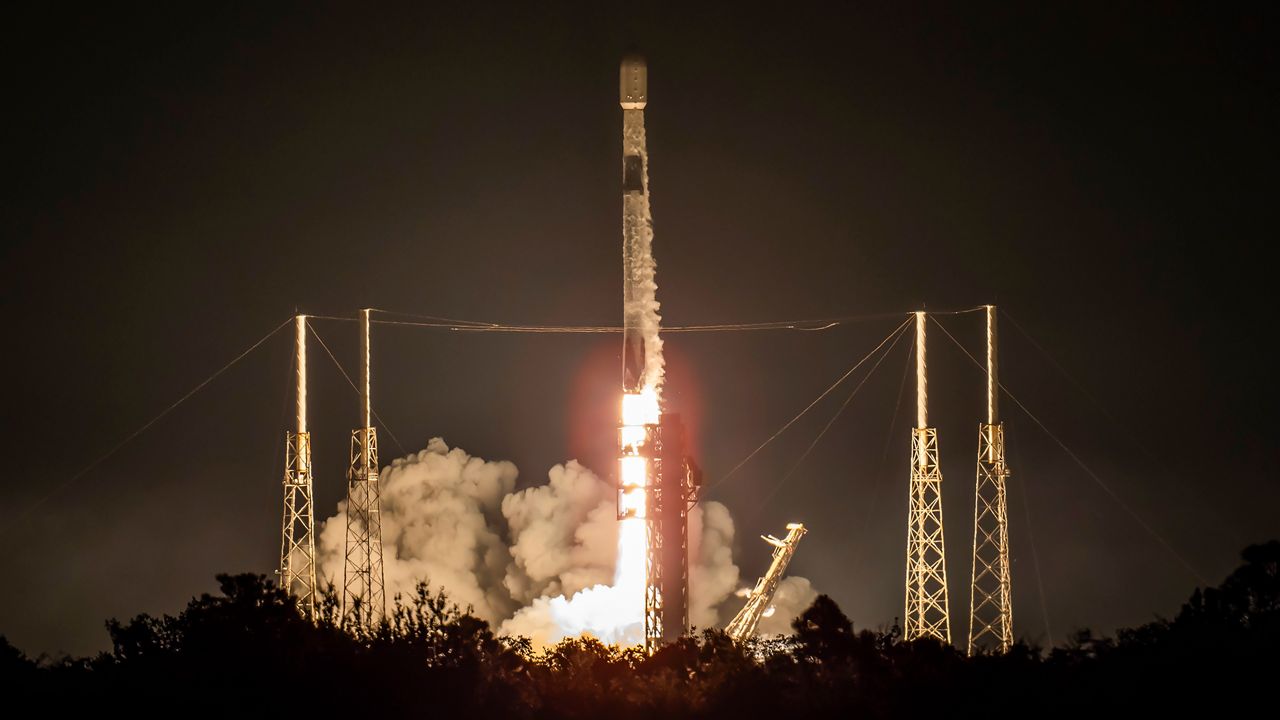CAPE CANAVERAL SPACE FORCE STATION — It was another early morning launch for SpaceX as it sent up more than 20 Starlink satellites.
What You Need To Know
- The Falcon 9 rocket sent up Starlink 10-4 mission
- The mission took off from Space Launch Complex 40 at Cape Canaveral Space Force Station
Starlinks skyward with liftoff of Falcon 9 pic.twitter.com/ACUno6c3Ie
— SpaceX (@SpaceX) July 28, 2024
The Falcon 9 rocket sent up the Starlink 10-4 mission from Space Launch Complex 40 at Cape Canaveral Space Force Station, confirmed SpaceX.
The nearly four-hour launch window was supposed to open at 12:17 a.m. ET, but the takeoff was pushed back to 1:09 a.m. ET.
This was the second early morning launch for SpaceX in a day. The first one, also taking off from Florida, was the first Falcon 9 launch since the FAA gave SpaceX clearance to use the rocket after an anomaly earlier in the month.
Going up
This was mission 14 for the Falcon 9's first-stage booster B1077. Before this launch, it had some impressive missions.
- Crew-5
- GPS III Space Vehicle 06
- Inmarsat I-6 F2
- CRS-28
- Intelsat G-37
- NG-20
- Starlink mission 5-10
- Starlink mission 6-13
- Starlink mission 6-25
- Starlink mission 6-33
- Starlink mission 6-43
- Starlink mission 6-51
- Starlink mission 6-63
After the stage separation, the first-stage rocket landed on droneship, A Shortfall of Gravitas, that was in the Atlantic Ocean.
Falcon 9 first stage lands on the A Shortfall of Gravitas droneship pic.twitter.com/wD4fhHcCpp
— SpaceX (@SpaceX) July 28, 2024
About the mission
The 23 large dining-room-sized satellites from the Starlink company, owned by SpaceX, found a new home at low-Earth orbit.
Harvard-Smithsonian Center for Astrophysics’ Dr. Jonathan McDowell records Starlink satellites.
Before this launch, McDowell documented the following:
- 6,215 are in orbit
- 5,848 are in operational orbit




